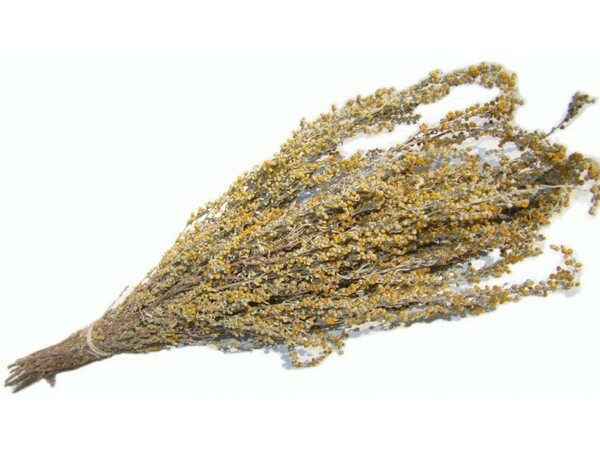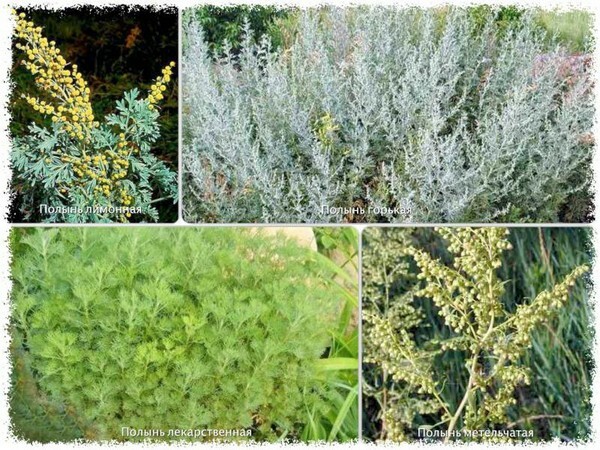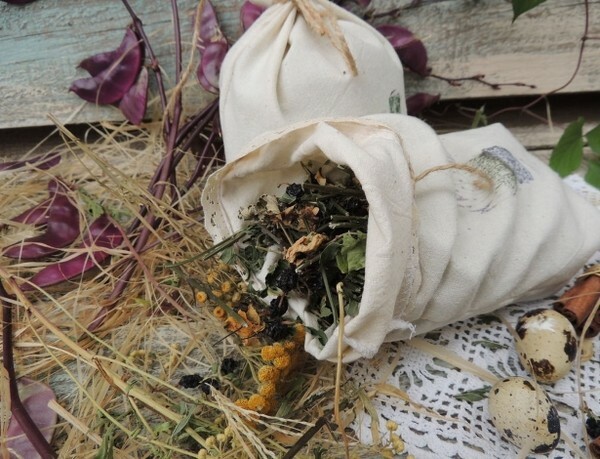- Useful properties of Artemisia
- Species of Artemisia
- When to collect wormwood and how to dry it
- How to make a wormwood for a bath
- Other ways of using Artemisia
Wormwood is a well-known and everywhere growing plant. Very many people openly consider it a weed, and if it grows on their plots, then they struggle with it with all their strength. They pull out, pollinate the earth and in every way prevent its growth in the future. Although in fact, you need to treat it a little differently, because it has a huge amount of healing properties. So, for example, if you use wormwood for a bath, then you can restore strength, improve your tone and cheer up, no matter how paradoxical it may sound.
Useful properties of Artemisia
Wormwood is famous for its many healing properties, it has been very popular since ancient times, and the ancient Slavs sometimes used it even as a medicine.

The following parts of this plain for the appearance of the grass have a special curative power:
- stalk;
- leaves;
- roots.
Types of Artemisia
Wormwood, harvested for a bath, can be of different types, each of them can have different effects on the body. It can be:
- lemon;
- medicinal;
- panicle;
- is bitter.

Lemon wormwood
This plant has an expectorant and analgesic effect, it also positively affects the supply of cardiac muscles with blood. For women, it is useful in that it can normalize the menstrual cycle, get rid of severe headaches and heat.
Medicinal wormwood
This wormwood is able to stabilize the digestive system, positively affecting the production of gastric juice and pancreatic enzymes. It also has an excellent choleretic effect.
Swarthy wormwood
Venetian wormwood has a diuretic property, and the essential oil prepared on its basis is a laxative. Also this plant is effective in the treatment of radiculitis, and women with it can normalize the menstrual cycle and make it less painful.
Bitter wormwood
It contains bitter glycosides, which give it a characteristic taste. This plant is able to normalize the work of the gastrointestinal tract, positively affecting all organs, as well as effectively combat the pathogens of fungal infections.When to collect wormwood and how to dry it
It is necessary to prepare the plant during the flowering period, since it is at this time that most of the essential oil is contained in its stems and leaves.
Important: the flowering period is in July-August.
Collect wormwood preferably away from the human habitat, avoiding, as far as possible, large industrial plants, highways, huge garbage dumps and so on. After collection it is not recommended to wash, as it will wash out most of the beneficial minerals and substances, and after that it will be difficult to dry.
When harvesting wormwood for a bath - collection should be carried out in sunny weather, and watch to ensure that the plants do not have dew( again, for the same reason, the difficulties with drying).Plants need to be cut in such a way that the maximum length of the stem is no more than 25 cm, and make sure that there are no coarse and thick stems.
Dry the wormwood in the shade, taking care of the proper level of ventilation. Lay the stems on a thin layer of cloth or paper, so that each of them completely dry. On average, this takes from 5-7 days. After that the dried wormwood will be stiff and have a spicy smell.
How to make a broom from a wormwood for a bath
To make a broom from a wormwood for a bath is very simple: for this you need to take a few stems and tie them together in the place where the leaves begin to grow. It is necessary to bind more tightly, since wormwood starts to quickly get wet and loses its strength properties. The fact is that wormwood is grass, and any grass has a property to soften in the water.
You do not need to use them like usual brooms, but to hang baths in different corners - this will promote the spread of the essential oils, so that the body will gradually saturate them. After such a steam room you will feel more fresh, rested and full of energy.
Tip: it is recommended to make a couple of brooms for one session in the steam room, because one may simply not be enough.
Although, if you collect a lot of stems and make an impressive broom size, then you can traditionally lash yourself.
You also need to take into account that when preparing brooms to dry wormwood should not be as described above. It must first be tied up in bundles and suspended in the dry and shady place downwards by the tops.
If a person has a tendency to allergies, then use a similar broom is not recommended, because when exposed to hot steam, Artemisia will emit esters, which are quite strong allergens. When they are inhaled, the head may become dizzy, and in combination with the steam this will lead to more severe allergic reactions. If you do not know exactly what the effect can be, then for the first time you can try this: just take a couple of stems and weave them into a regular broom. In this case, the smell will not be so strong, and you will understand if this plant is suitable or not.
It should also be taken into account that any species of wormwood has a rather specific smell, which not everyone will like. If you have previously tried drinks or dishes with wormwood and have not experienced the delight of flavor, then the use of a broom from wormwood in the steam room is better to refuse - the smell will be exactly the same. Perhaps, it will even increase, since a narrow space will contribute to its high concentration.
Important: baths using wormwood broom categorically contraindicated to women in position and breast-feeding!
Other ways of using Artemisia
The
zaparka Zaparka is a mixture of well-dried and shredded stems and leaves, which is placed in a small bag of natural tissue, after which it must be placed in hot water for 15-20 minutes. Further, this water simply splashes on the glowing stones in the oven. When evaporated, it instantly begins to emit essential oils into the air and promote the appearance of a spicy, specific flavor.

When preparing the fume it does not make a difference whether to add only wormwood or make a mixture of several medicinal plants. Keep the grass can be 3-4 years, after that its therapeutic effect will dry up.
Broth
In this case it is better to use several herbs - the effect will be better. On average, the proportions are as follows: 70-100 grams of medicinal plants should be added to 3-4 liters of water. Then put everything on the fire, bring to a boil, then reduce the fire to a minimum and let it brew for 5-7 minutes. Shelf life in this case is very small - only 1-2 days, so prepare the broth preferably immediately before going to the bath.
